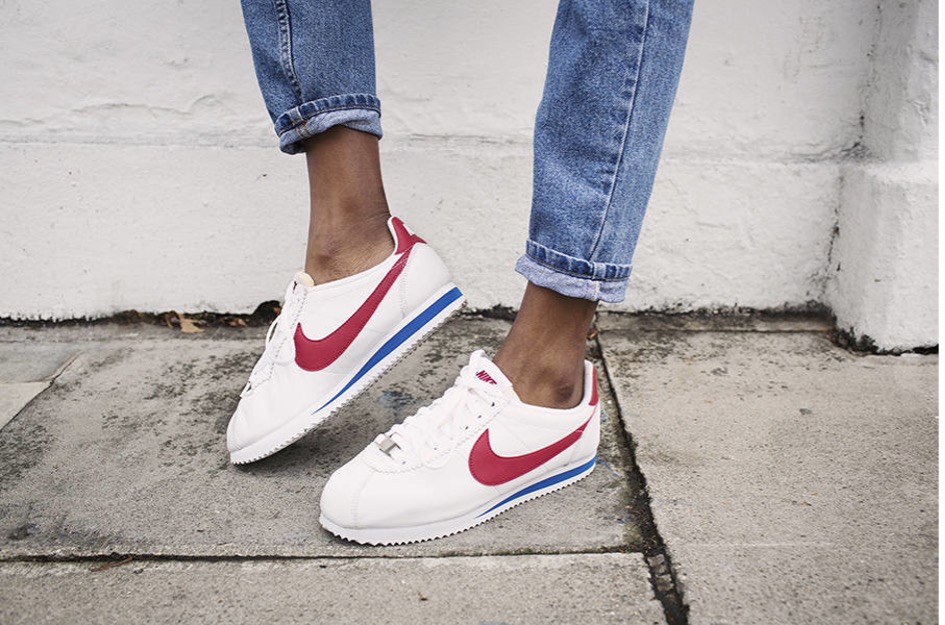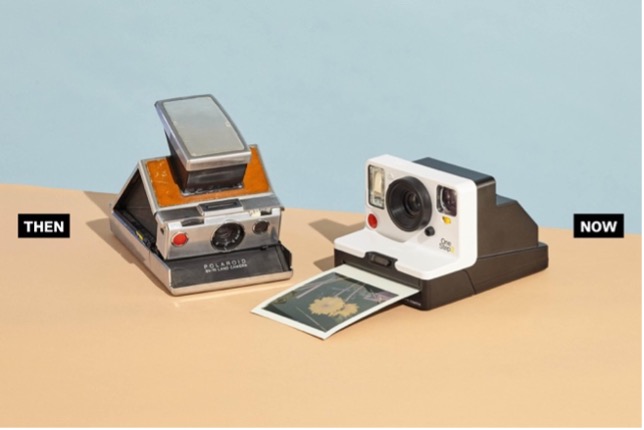It’s natural for the human mind to seek comfort in the past, turning to familiar experiences and happy memories for a sense of refuge. This sentiment, known as nostalgia, has become a potent tool for marketers seeking to forge emotional connections with consumers. By evoking joyful memories and positive associations, brands can create emotional resonance that drives engagement and loyalty, ultimately motivating consumers to make a purchase. How can we implement nostalgic elements into our marketing strategies and make use of them?

Defining Nostalgia
Nostalgia is a sociological phenomenon about the contemporaneous interest towards elements belonging in the past. Simpler said: it is a sentimental affection for the past, typically associated with personal or collective memories. It can combine both positive and negative emotions, often described as a bittersweet feeling that mixes joy and longing. You´ve probably experienced this yourself – do you remember the smell of your grandmother’s favorite dish? Or the excitement of going to pick one movie for the weekend at the local video rental shop? These moments capture the essence of nostalgia: a connection to the past that brings comfort.
Nostalgia can be manifested in two different forms: personal nostalgia and historical nostalgia. Personal nostalgia refers to the longing of specific experiences or moments from one´s own life, such as your favorite toy as a child, the place where you always went on holidays with your family or the music you listened to in your adolescence. Personal nostalgia is deeply subjective, being tied to each person´s unique experience. On the other hand, historical nostalgia (also called fauxstalgia) refers to a longing for a past that may not be tied to one’s personal experience but is instead part of a shared cultural or societal memory. Unlike personal nostalgia, historical nostalgia is less about reliving individual memories and more about idealizing a time period of cultural or historical significance, which the person may not have experienced directly. For example, the series Stranger Things can evoke historical nostalgia in younger audiences, who didn´t experience the 80s on firsthand, by recreating the look and feel of that decade, tapping into collective memories of pop culture, music, and aesthetics.-
But, how does it work in our brain?
The psychological appeal of nostalgia lies in its ability to connect people to the past, particularly to meaningful experiences. Humans have an inherent need for connection, not only with others but also with their own personal history. Nostalgia fulfills this need by creating a bridge between the past and present. However, not everything is rosy: nostalgia often involves selective memory. People tend to remember the positive aspects of past experiences more vividly than negative ones. This means that our memory can “filter” past times through so called “rose-colored glasses”, whereby negative events from the past can be molded into a positive narrative. This idealized version of the past creates a sense of security and happiness, allowing people to momentarily escape from present-day challenges.
Why does nostalgia marketing work?
Nostalgia is deeply rooted in our emotional and cognitive processes. When we experience nostalgia, it activates areas of the brain associated with memory, reward, and emotional processing. This neurological response can create a powerful emotional experience that influences our perceptions and decision-making. Nostalgia marketing works because it taps into the positive emotional associations people have with past experiences. By evoking these feelings, brands can create a sense of comfort, familiarity, and trust with consumers.
Consumers may be attracted by elements that positively evoke the past, especially in the presence of some negative attitudes towards the present. When consumers are reminded of a happy time of the past, they can start associating those positive emotions with the brand. Nostalgia marketing offers a familiar and comforting narrative in a marketplace often flooded with new, unfamiliar products. By reviving a sense of the past, brands can evoke strong emotional responses that lead to deeper consumer connections.
Nostalgia has been shown in many marketing studies to significantly influence consumer behavior, leading to increased brand loyalty, stronger purchase intentions, and enhanced brand attachment. Studies reveal that consumers are highly sensitive to nostalgic elements, appreciating when past experiences are integrated into modern products and services(Erraja et al., 2013). In a study regarding retail spaces and the exposure to nostalgic references was found that small businesses can also capitalize on nostalgia by turning routine activities into experiential events, using nostalgic cues related to products, that strengthens feelings of community and loyalty among customers. (Hamilton & Wagner, 2014).
In a survey comparing nostalgic vs non-nostalgic brands was found that nostalgia enhances emotional bonds with brands, contributing to stronger self-brand connections, attachment, and storytelling. These emotional ties positively impact the likelihood of purchasing nostalgic products, both for personal use and also as gifts for someone else (Kessous et al., 2015). Research shows that nostalgic emotions play a crucial role in building brand trust and attachment, reinforcing the long-term appeal of nostalgic marketing (Wen et al., 2019).
(Source: Book Nostalgia Marketing Rekindling the Past to Influence Consumer Choices Marco Pichierri)
Is nostalgia a generational thing?
Nostalgia is not always about age, but mindset. Young consumers can be nostalgic for a time they haven´t lived through. Historical and personal nostalgia can work in tandem to unify your audience while targeting different generations. Brands can leverage nostalgia as a bridge between demographics, appealing to different age groups; we will see some cases below.
However, different generations respond to distinct cultural and historical cues based on their unique experiences and we can appeal to them by connecting with their personal nostalgia, for example to iconic times related to their childhood and adolescence.
Famous success stories
Many brands have successfully implemented nostalgia in their marketing strategies, sometimes partially in specific campaigns and sometimes as a complete brand identity:
- Coca-Cola: leveraged from success of the series Stranger Things to bring back the New Coke Can, reminding older consumers of the “good old days” – even thought the product was a major flop back then.

- Nintendo: In 2016, Nintendo revived its iconic 1980s gaming console, the NES, with a limited edition. The NES Classic Edition featured the same games from the original console, appealing to older gamers who grew up playing it.

- Nike: Nike has been capitalizing on nostalgia for decades by re-releasing retro versions of their classic sneakers. This approach attracts older customers who wore the originals, while also appealing to younger fashion enthusiasts who view retro as stylish.


- Polaroid: The revival of Polaroid instant cameras appeals to both older consumers who remember the original products and younger generations drawn to the retro aesthetic. Even Instagram looks like a Polaroid.

The appeal of nostalgia is likely to grow stronger. Consumers seek comfort and familiarity in an uncertain world, making nostalgia marketing an increasingly valuable approach. Nostalgia marketing has proven to be a powerful tool for brands seeking to create emotional connections with consumers.
However, it’s crucial for marketers to strike a balance between nostalgia and innovation. While tapping into the past can be effective, brands should also demonstrate their relevance in the present and their positive vision for the future. By thoughtfully combining nostalgic elements with forward-thinking approaches, businesses can create marketing strategies that resonate deeply with consumers, while positioning themselves as adaptable in an ever-evolving marketplace.
Here are some tips, how to successfully implement nostalgia marketing:
- Look at your brand´s heritage: explore ways to re-release bestselling hero products and archived favorites.
- Blend old and new: nostalgia marketing works best when brands strike a balance between the past and present. While using familiar imagery or products can trigger memories, it’s important to also offer something new or innovative to keep the campaign fresh and relevant.
- Use pop culture references: iconic movies, TV shows, and music are particularly proven effective in nostalgic marketing.
- Identify your audience: the references and cultural symbols that resonate with Gen X may not appeal to Gen Z, so tailoring your strategy to your audience is, as always, essential.
- Create interactive experiences: nostalgic marketing is even more effective when it engages consumers in interactive experiences. This could be for example through social media challenges or throwback-themed events.
When bringing a brand to the future and making it interesting for new audiences, it’s always necessary to keep the core part and renew the rest to make it appealing.
Thanks to my colleague Maria van Megroot Benhaim for writing this article together.
Sources:
- The Intergenerational Opportunity, WGSN
- Gen Z Nostalgia for Digital Natives, WGSN
- Lifestyle Trend Y2K reviva,l WGSN
- Lifestyle Trend: 90s Nostalgia, WGSN
- Gen X Nostalgia, WGSN
- Nostalgia Marketing: Rekindling the Past to Influence Consumer choices, Marco Pichierri
- Nostalgie und Retro-Trends als Marketingchance: Eine Analyse der Ursachen für die Nachfrage nach vergangenheitsbezogenen Konsumangeboten, Tina Kießling
- Consumer Behavior in Practice: Strategic Insights for the Modern Marketer, Eugene Y. Chan
- https://www.webmd.com/balance/what-to-know-about-nostalgia
